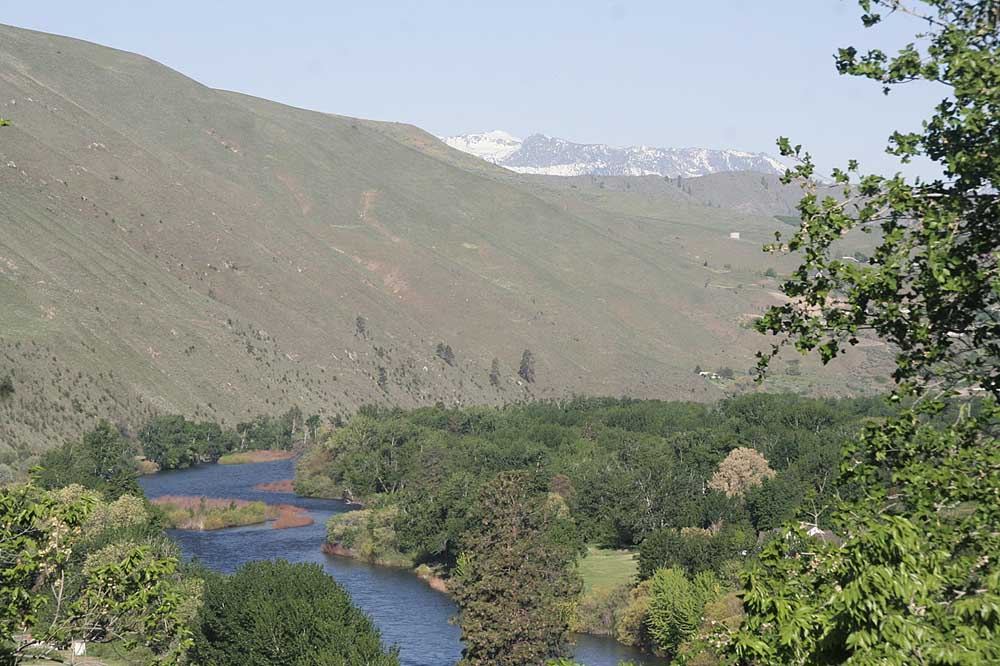Washington drought may spread
Published 10:15 am Thursday, May 9, 2019

- The Wenatchee River just west of Wenatchee, Wash., May 7, with the snowy Enchantment Peak in the background. Drought may soon be declared in the river drainage.
WENATCHEE, Wash. — The Wenatchee, Entiat and Chelan river drainages and the Olympic Peninsula may be added to state drought declarations, but water officials predict any summer water shortages won’t be as severe as they were in 2015.
As of May 1, the Central Columbia Basin — the Wenatchee, Entiat and Chelan drainages — were forecast for May through September at 64 to 85% of normal streamflow, said Scott Pattee, USDA Natural Resources Conservation Service state water supply specialist in Mount Vernon, Wash.
The Olympic Mountains were at 80 to 81%. The threshold for drought is 75% and below.
“I think there will be a discussion later this week by the committee on whether to add the Central Columbia Basin and probably the Olympic Peninsula as well,” Pattee said.
The Water Supply Availability Committee is a group of representatives from state and federal agencies who evaluate water supply conditions and recommend drought declarations to an executive committee, which in turn makes a recommendation to Gov. Jay Inslee.
A month ago, Inslee declared droughts in the upper Yakima Basin and the Okanogan and Methow valleys.
Chris Lynch, U.S. Bureau of Reclamation hydrologist in Yakima, said it does not appear any drought this year will be as severe as in 2015.
Drafting (drawdown exceeding inflow) of the five mountain reservoirs serving Yakima Basin irrigation districts began April 15 in 2015 and probably won’t start this year until the normal time, which is the end of May or early June, Lynch said.
On May 6, the five reservoirs were at 65% of their 1,065,400 acre-foot capacity and at 86.3% of average. They likely will top out at about 900,000 acre-feet in a month, Lynch said.
The issue is how fast temperatures increase in May and how fast remaining mountain snowpack melts. The melt is accelerating but hopefully not too fast, he said.
More likely than not, the melt won’t be too fast and the water supply forecast will remain in the mid-70% range for junior water right holders in the Yakima Basin, Lynch said.
If that happens, “we will say, ‘Whew, we made it,’” he said.
A month ago, the bureau forecast water supply at 77% of full entitlement for junior water right holders, including the Kittitas Reclamation District and Roza Irrigation District. On May 6, the bureau dropped the forecast to 75%.
“If it stays at that, we will attempt to operate our system at 4 acre-feet per acre (of irrigated farmland) and be three weeks short at the end of the season in September,” said Urban Eberhart, KRD manager.
Normally, the KRD operates at 5 acre-feet per acre. It serves 60,000 acres on which timothy, alfalfa, pastures and tree fruit grow.
Water deliveries began April 22 with light demand because of cool weather but demand is now increasing with warmer weather, Eberhart said.
“We anticipate some tree fruit people will work with (the state Department of) Ecology to drill supplemental wells,” he said.
Scott Revell, manager of the Roza Irrigation District, said water deliveries will be reduced to maintain service as far into September and, preferably, October as possible.
“We think we can operate without shutting the system down in May or June but that could change if conditions deteriorate in the next few weeks,” Revell said.
In 2015, the Roza shut down early for three weeks to conserve water for later in the season. Rations were reduced and growers lost millions of dollars of crops.
Water from drains in concrete-lined sections of the main canal will be pumped back for use and the district will help growers get state approval to use emergency wells, Revell said.
The district has piped 40-plus miles of lateral canals with grower money and received grants to seal concrete in the main canal to reduce leakage since 2015, he said.
About 400 pear growers in the Wenatchee Valley received one-third less water from mid-July to the end of the season in the drought of 2015 because the Peshastin Irrigation District has no water storage.
If the Wenatchee and other rivers get too low it could also be bad for returning salmon and summer river rafting, he said.
Statewide snowpack was 73% of normal on May 1 with lows of 61% in the Olympics and upper Yakima and highs of 159% in Walla Walla and 112% in the lower Snake River.
May through September percent of normal streamflow by basin forecast:
• Spokane, 71-74%.
• Pend Oreille, 79-88%.
• Upper Columbia (Okanogan and Methow rivers), 62-86%.
• Central Columbia (Chelan, Entiat and Wenatchee), 64-85%.
• Upper Yakima, 51-68%.
• Lower Yakima, 74-87%.
• Walla Walla, 107-114%.
• Lower Snake River, 83-130.
• Lower Columbia, 79-87%.
• South Puget Sound (from Cascade crest to lowlands), 77-81%.
• Central Puget Sound, 72-77%.
• North Puget Sound, 77-81%.
• Olympics, 80-81%.






